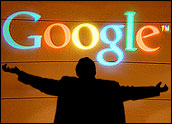
When we think about financial bubbles, we typically recall the recent run-up in house prices or the dot-com craze of the late 1990s (and some think of the 17th century tulip bubble). We might define “bubbles” as sharp price increases for an asset without supporting increases in the intrinsic value or other fundamental financial characteristics. Another defining feature: You can’t see a bubble until it pops.
College education seems to be heading in that direction. The College Board reports that tuition has increased on an inflation-adjusted basis by 6.6 percent at public universities and 3.2 percent at private schools.
While proponents argue that these increases are mitigated by a broad suite of financial aid, Pell Grants and other programs also effectively boost tuition costs to everyone else, as the Cato Institute’s Neal McCluskey has clearly explained.
To make matters worse, with 55 percent of bachelor degree’s recipients at public colleges borrowing an average of nearly US$20,000, it is clear that we are launching a generation of debtors.
Online Education, Digital Texts
Is the rapid price increase a response to skyrocketing costs? Hardly. The key expense to universities is faculty salaries, and the Chronicle of Higher Education reports that salaries rose by only 1.2 percent this year. In fact, costs are likely going to plummet as universities experience the same massive restructuring affecting every other industry.
As I





















































Social Media
See all Social Media